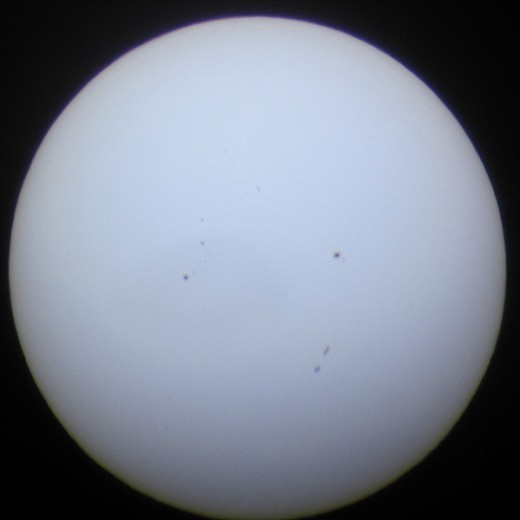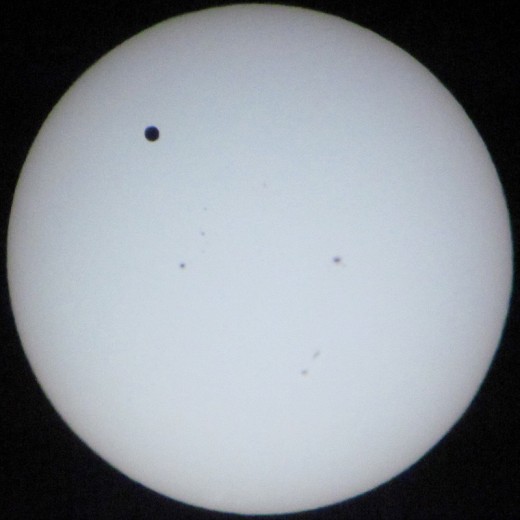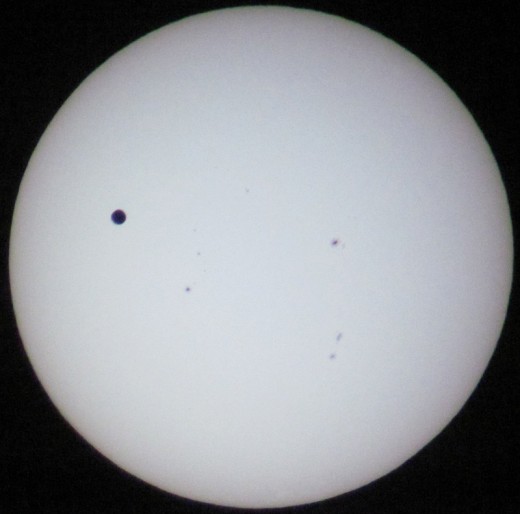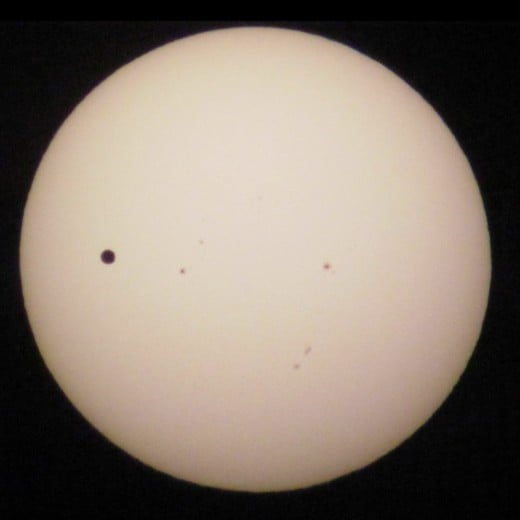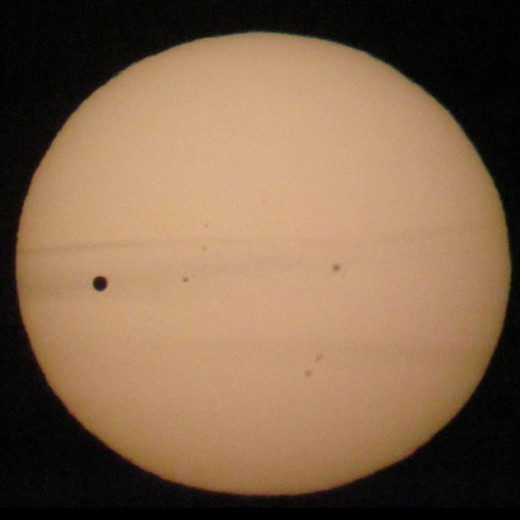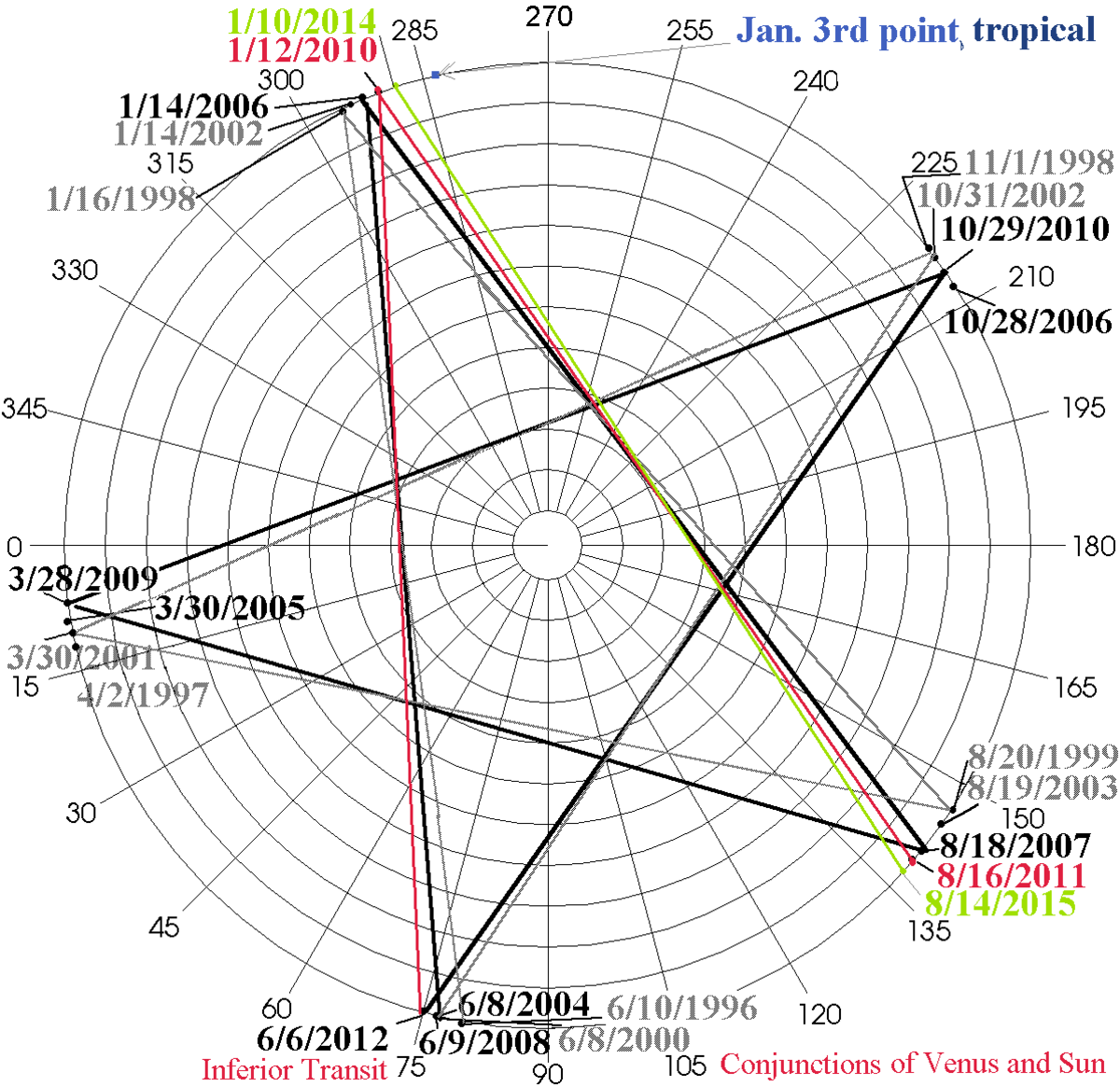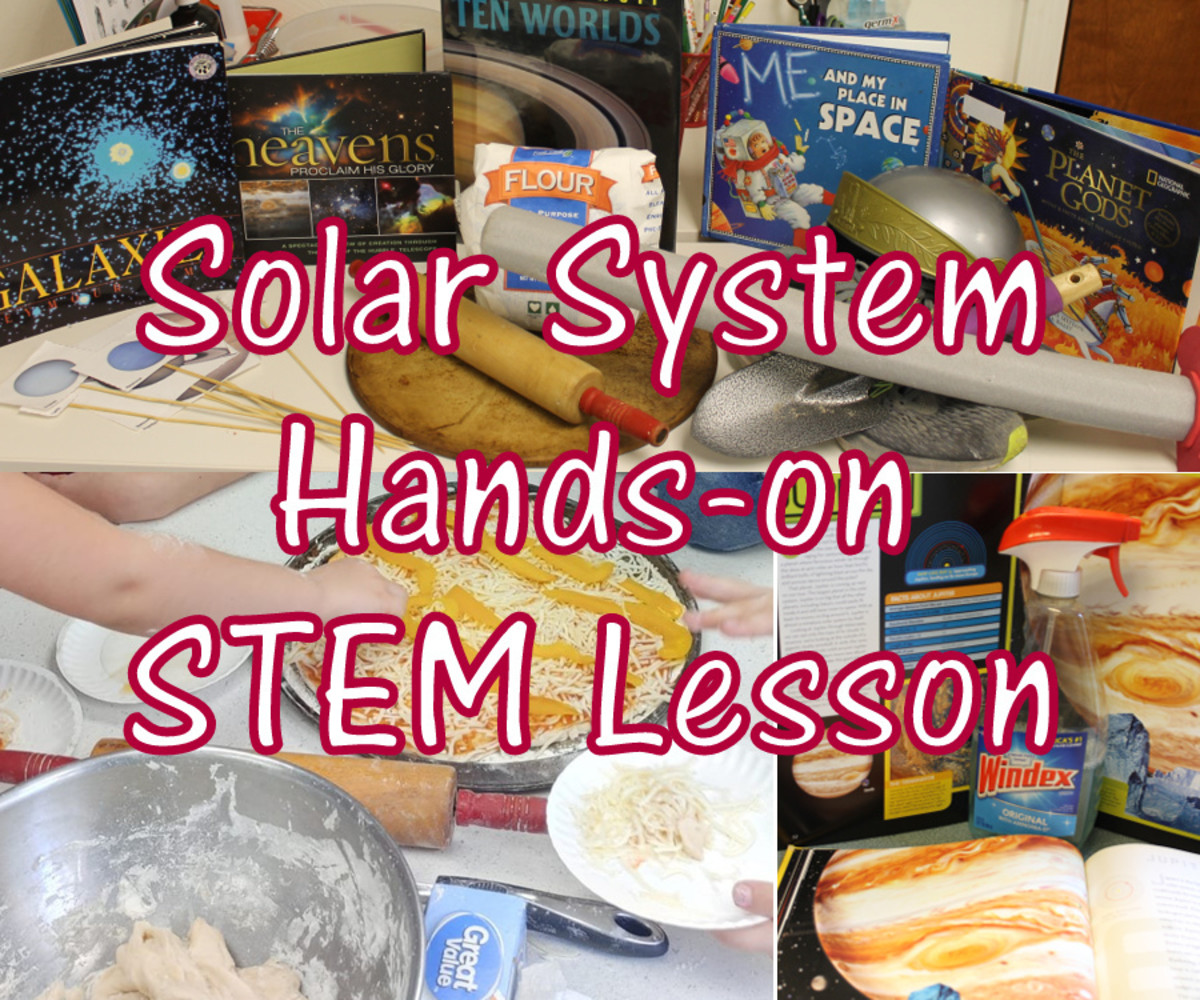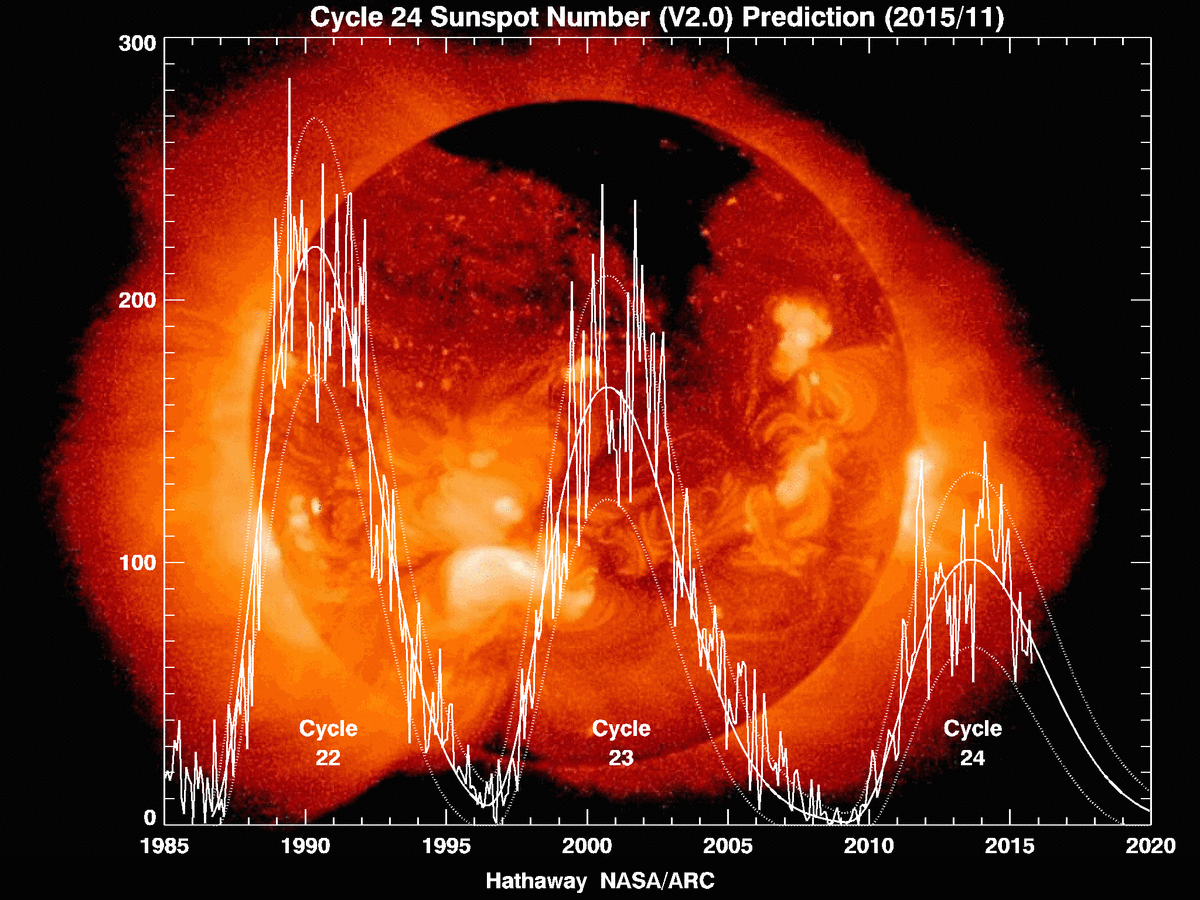My Photos of Venus Against the Sun: Last Transit Until 2117!
My Photo of Venus in Transit
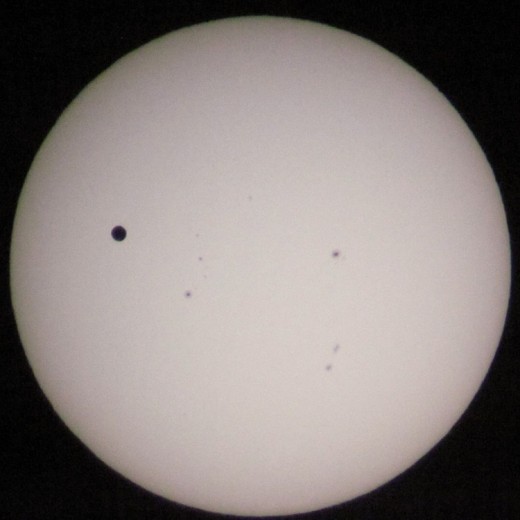
A rare solar system alignment
Following my photos of the May 20, 2012 solar eclipse using a point-and-shoot digital camera and a backpacker's telescope, I decided to get my money's worth out of my mylar, duct tape and butter tub homemade solar filter.
On June 6, the planet Venus passed exactly between the Earth and the Sun, creating a mini-eclipse or black spot against the sun. This is called a transit, from the Latin for "across" and "go." (Here's NASA's chart of Venus' path.)
It's not spectacular: even with a better telescope than mine, all you'd see is a black circle. But it's humbling to realize that Venus is basically Earth's evil twin, only a few hundred miles smaller (and a few hundred degrees hotter). Yes, our own planet is a speck, just like this.
In southern California, Venus' amble across the solar disc started at 3:06 PM and was not quite finished when the sun set. Again, we're fooled by astronomical distances and scales. The Sun's diameter is 864,949 miles (See this comparison of the Sun and Earth). Despite what it looked like, Venus isn't snuggled up against the Sun: the second planet is 67 million miles away, speeding around the Sun at 78,341 mph!
Too many numbers, Mr. Spock! The point is: Venus is moving really fast, but it's so far away, and the Sun is so big, that watching a transit of Venus is like watching the hour hand on a wristwatch.
Sizes of Mercury, Venus, Earth and Mars Compared
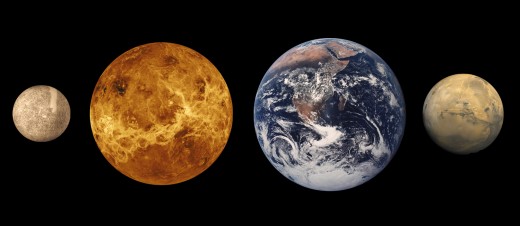
Why It Matters

So What's the Big Deal?
This is an extremely rare astronomical event. All the planets are orbiting the sun at their own speeds, and those orbits aren't perfectly flat: they're tilted a little this way and a little that way. This means it's very uncommon for two planets to line up exactly like a pair of croquet hoops with the sun as the post.
Venus last transited in 2004, but before that, 1882. When will it happen again? The next transit of Venus will be in 2117.
So, why is the transit of Venus important enough to garner attention, other than the fact that it doesn't happen but once or twice in a lifetime? It's just a curiosity now, but in the 1800s, an amazing international scientific project was launched to measure the transit of Venus accurately from many different locations in order to calculate its distance from the Sun, our distance from the Sun, and the rough size of the solar system. That tiny black speck helped us understand just how vast the universe is. (See this article for a rare photograph of the 1882 transit: it looks a lot like mine!)
A Few More of My Photos of Venus Against the Sun
Click thumbnail to view full-size




Other People's Great Photos of Venus Transit
- Venus transiting the Sun – in pictures | Science | guardian.co.uk
Of course, my own Venus transit photos are nothing compared to some people's. Here's a great photo gallery from the Guardian newspaper online.

